The impact of light colors on sleep quality has been the subject of much research and discussion in recent years. One area of particular interest is the potential benefits of using LED lights of specific colors to promote better sleep.
Sleep is well-known as crucial for maintaining overall health and well-being, but the appropriate LED light color to enhance restfulness deserves attention.
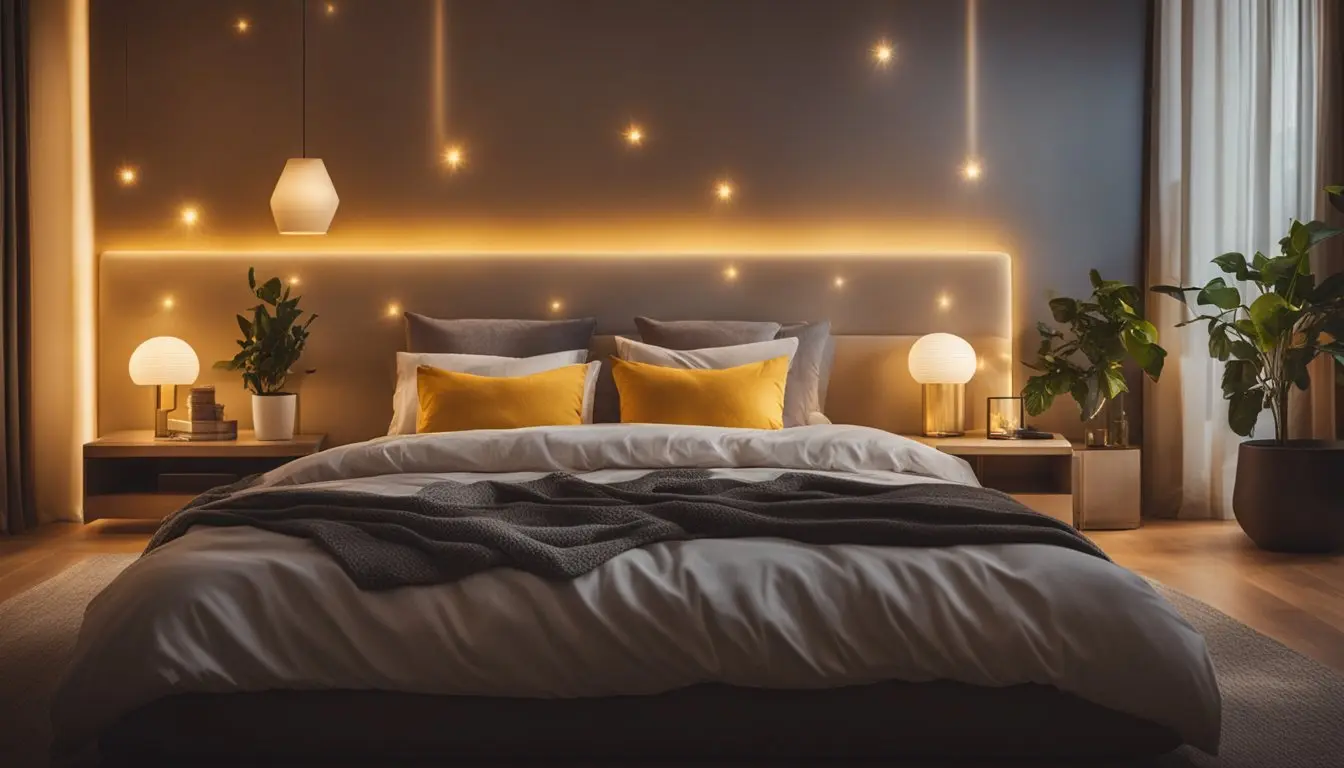
Studies have shown that red light can be the most effective color for promoting sleep, as it encourages the production of melatonin – the hormone responsible for regulating sleep cycles. Melatonin release is traditionally driven by sunlight, with red light mimicking the wavelengths found during sunset. In contrast, blue light can suppress melatonin production, producing heightened alertness and negatively impacting sleep quality.
The importance of individual preference cannot be overlooked when considering LED light colors and their impact on sleep. While specific colors may be scientifically proven to have more positive effects on sleep, one’s comfort and preference should also be considered when selecting the ideal light color to ensure a restful night.
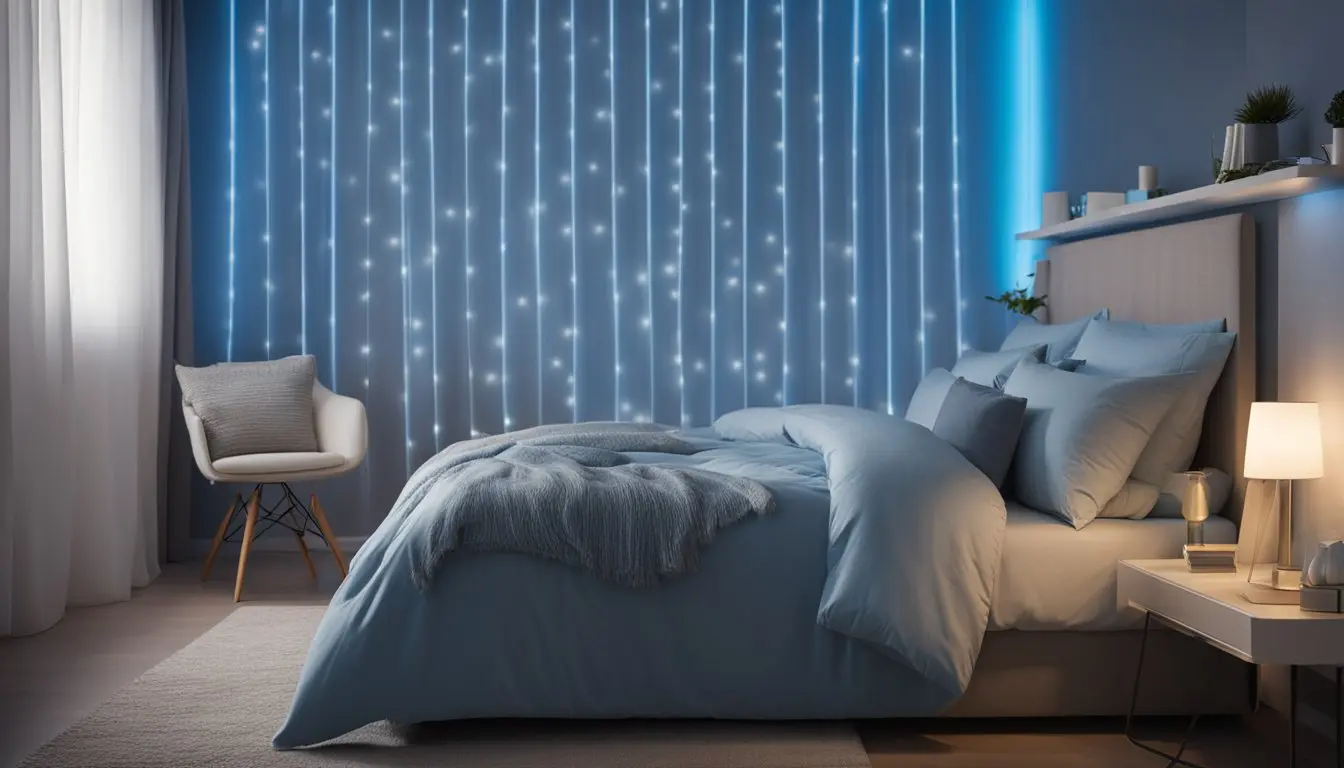
Exposure to different wavelengths of light can significantly affect our sleep quality. One notable concern is the blue light emitted by electronic devices like smartphones and computers. Research indicates that exposure to blue light in the evening can interfere with the production of melatonin, the hormone responsible for regulating sleep. This disruption can lead to difficulties in falling asleep and poor sleep quality.
On the other hand, studies have found that red light exposure can improve sleep. Red light therapy has been shown to increase melatonin levels, thus promoting better sleep quality. This is likely due to the longer wavelengths of red light, which are less disruptive to our natural sleep cycles. Incorporating red LED lights in the bedroom may benefit individuals seeking a more restful night’s sleep.
Our bodies follow a circadian rhythm, an internal biological clock that regulates our sleep and wake cycles. Exposure to natural light during the day helps maintain this rhythm by promoting alertness and suppressing melatonin production. Our bodies gradually increase melatonin production as evening approaches, signaling sleep time.
| Light Exposure | Effect on Sleep | Effect on Melatonin Production |
| Blue Light | Disrupts sleep | Suppresses production |
| Red Light | Improves sleep | Increases production |
| Daylight | Supports wakefulness | Suppresses production while awake |
Under normal conditions, natural light exposure during the day helps reinforce our circadian rhythm, while avoiding disruptive blue light in the evenings allows for a smoother transition into sleep. Incorporating suitable LED light colors like red light can further support healthy sleep patterns and improve overall well-being.
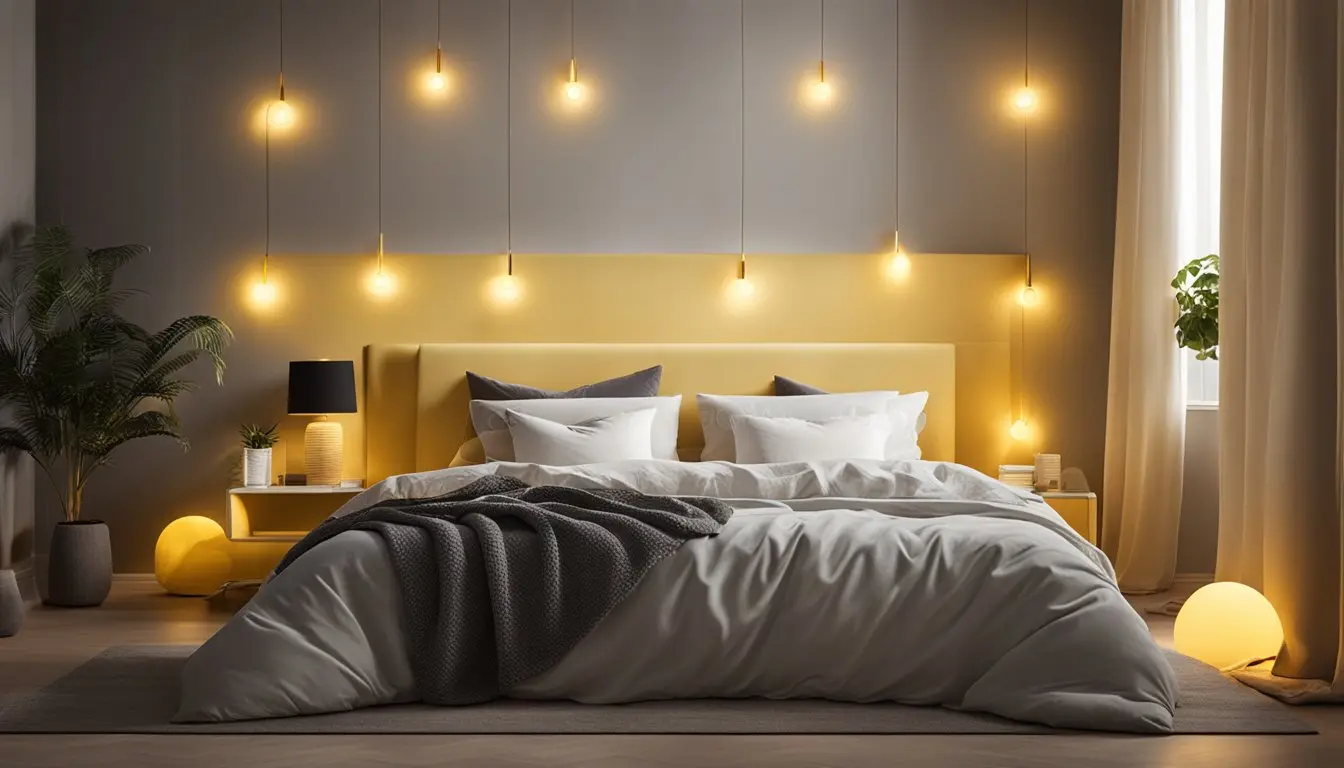
Regarding the impact of light on sleep quality, not all colors are created equal. Light wavelengths play a significant role in how our bodies react to exposure. Each color has a specific wavelength, with blue light carrying shorter wavelengths and red light having longer wavelengths.
Blue light, found in electronic devices and LED lights, has a wavelength of around 480 nanometers. It has been shown to suppress melatonin production, the sleep hormone released by the pineal gland. Consequently, this may lead to disrupted sleep patterns and decreased sleep quality.
On the other hand, red light has a wavelength of approximately 620-750 nanometers. Several studies suggest that exposure to red light can stimulate melatonin production, supporting the mental and physical relaxation needed for a good night’s sleep.
Warm and cold light can be distinguished based on their color temperature, measured in Kelvin (K). Warm light typically has a lower color temperature (below 3000K), producing colors ranging from red to yellow. Cold morning, conversely, has a higher color temperature (above 5000K), emitting colors from blue to white.
Research indicates that exposure to warm light, mainly red and amber colors, can help improve sleep quality. Due to its longer wavelength, warm light does not suppress melatonin production as much as cold, blue light. Furthermore, avoiding blue light from electronic devices before bedtime is recommended, as it can trick the brain into believing it’s still daytime, disrupting the natural sleep-wake cycle.
Choosing the appropriate LED light color is crucial for a good night’s sleep. Red and amber lights can provide a warm, relaxing environment conducive to sleep by promoting melatonin production, whereas exposure to blue light may lead to poor sleep quality. Ultimately, being mindful of the light colors within your environment can help support a healthy sleep pattern.
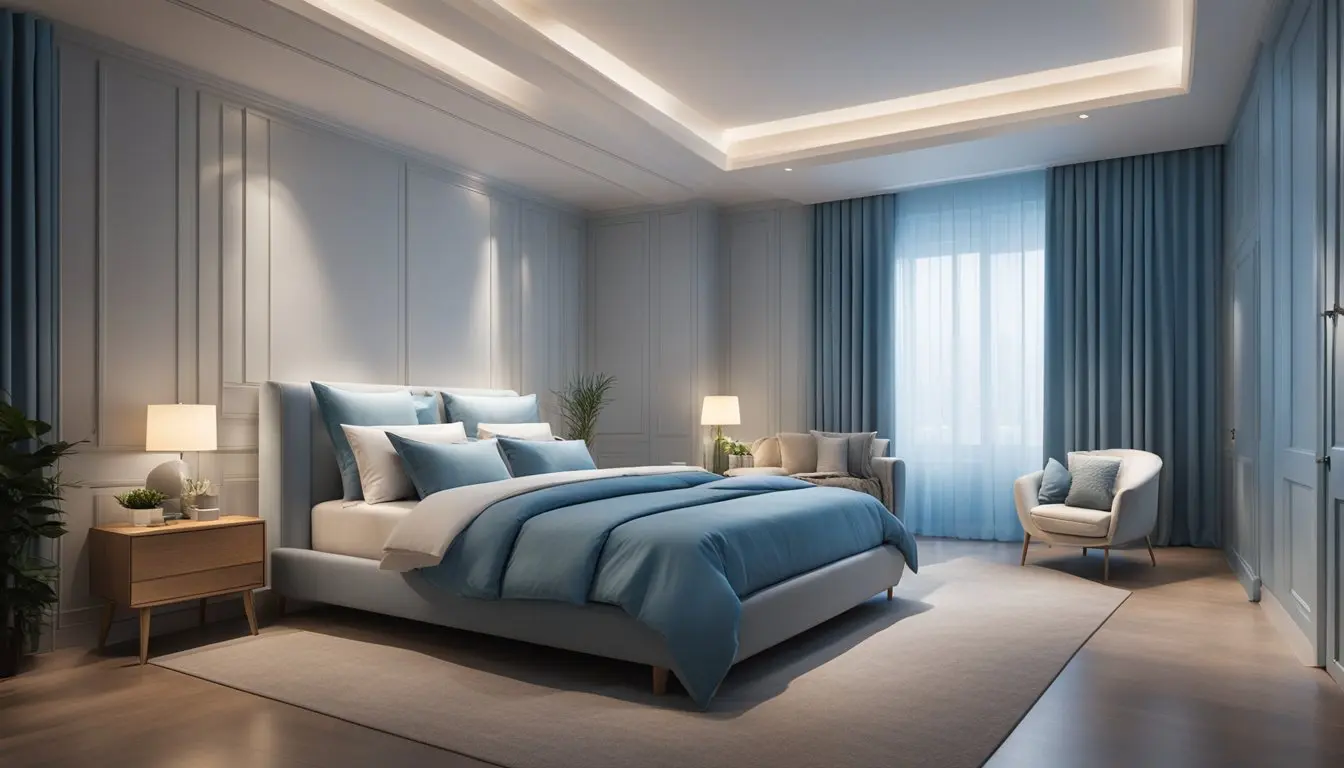
When selecting LED lights for your bedroom, it is essential to consider the color temperature. Research indicates warm light colors, such as red and amber, are optimal for promoting better sleep because they foster the secretion of melatonin, the sleep hormone. Melatonin production rises during the evening and decreases during the daytime, helping regulate your sleep-wake cycle.
In contrast, more excellent colors like blue and white, primarily sourced from electronic devices, should be avoided. Exposure to blue light tricks the brain into thinking it’s still daytime, thus disrupting the natural sleep-wake cycle.
Equally crucial to the choice of LED light color is the arrangement and setup of your bedroom. Here are some practical tips for creating an ideal sleep-promoting environment:
Incorporating these strategies into your bedroom lighting and setup can help create an optimal environment for better sleep. The key is to focus on warm, light colors and a calming, well-organized bedroom space that promotes relaxation and restful sleep.
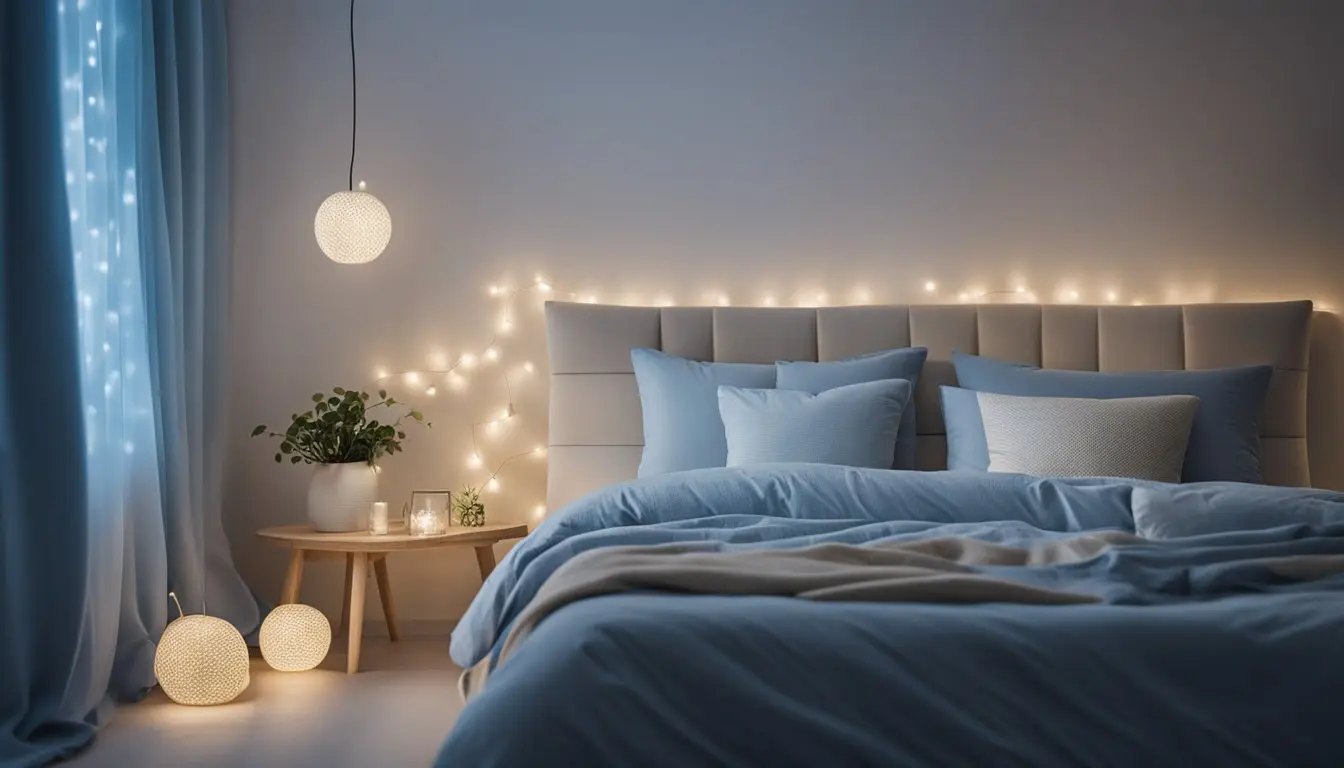
Light therapy is a nonpharmacological treatment that can help people suffering from insomnia, a sleep disorder characterized by difficulty falling or staying asleep. Exposure to specific color LED lights and appropriate timing can influence the production of melatonin, a hormone that regulates sleep and wakefulness.
For instance, red light stimulates melatonin production, helping the mind and body relax while drifting off to sleep. On the other hand, more fantastic light colors, like blue light emitted by electronic devices, can suppress melatonin production and disrupt sleep.
To maximize the benefits of light for sleep:
The right light color affects sleep and significantly affects an individual’s overall well-being. Different light colors affect mood, stress levels, and overall mental health. For example:
In addition, exposure to natural sunlight during the day can improve mood and synchronization of internal circadian rhythms. Incorporating natural light in living spaces, using daylight-colored LED bulbs during daytime hours, and engaging in outdoor activities can regulate sleep patterns and enhance overall well-being.
In summary, understanding the effects of various light colors on sleep and health is essential for creating an optimal sleep environment and enhancing general well-being. Supported by scientific research, thoughtful light choices can promote relaxation, improve mood, and reduce stress — all vital elements for obtaining a good night’s sleep.
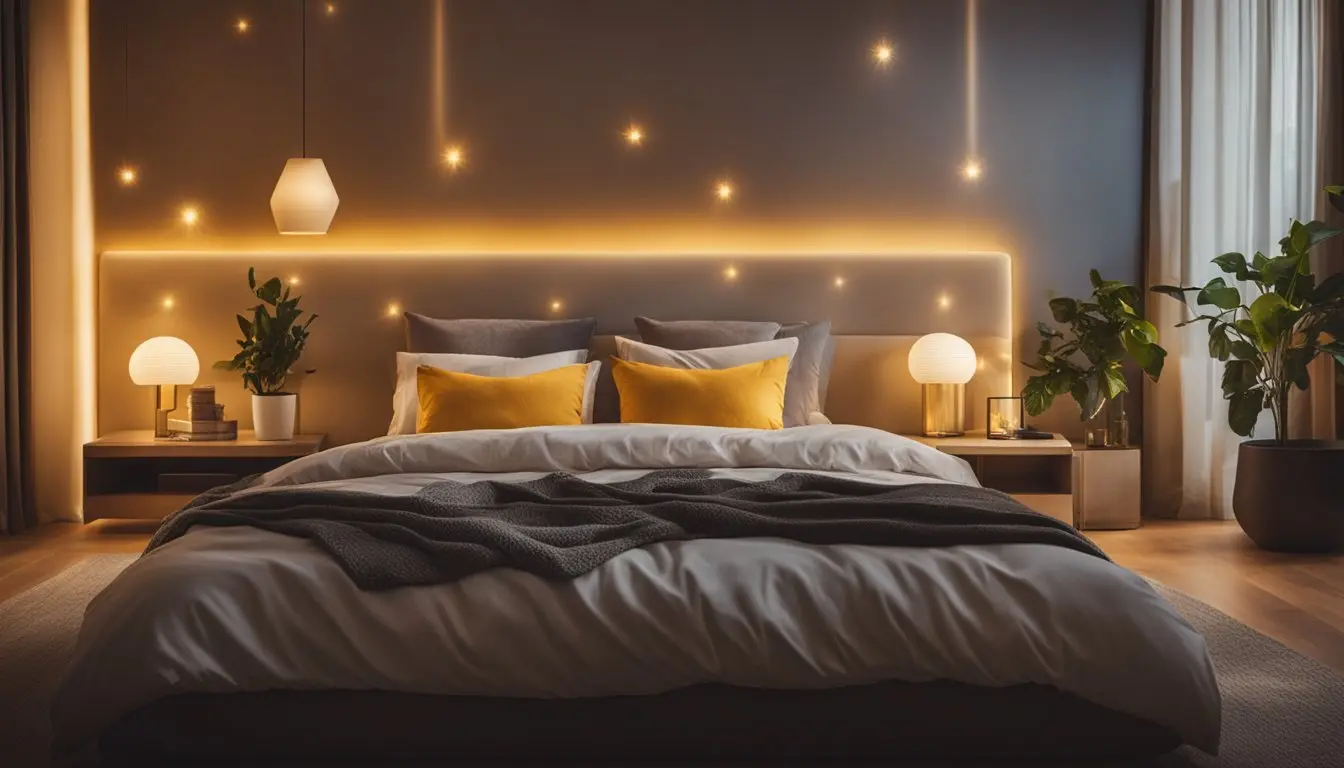
Exposure to blue light from electronic screens, such as mobile phones, computers, and other digital devices, can disrupt our natural sleep patterns. The blue light emitted by these screens can suppress melatonin production, a hormone that helps induce drowsiness and regulate sleep.
As a result, people who constantly use these devices may experience reduced sleep quality. To promote better sleep and overall well-being, it’s essential to adapt some strategies to limit blue light exposure and adjust the settings on our devices.
There is a variety of options available to help limit blue light emission from electronic screens, including filters and adjustable screen settings:
●Blue light filters: These physical filters can be easily attached to screens, blocking harmful blue light without affecting overall image quality.
●Screen protectors with blue light reduction: Many screen protectors also include a blue light reduction feature, which can simultaneously protect your device and your eyes.
●Built-in software settings: Many devices have settings or apps that automatically reduce blue light exposure during pre-set hours or in response to the time of day. Some examples are:
○iOS devices: Enable “Night Shift” in the Display & Brightness settings.
○Android devices: Activate “Night Light” or “Blue Light Filter” in the Display settings.
○Windows computers: Turn on “Night Light” in the System settings.
○Mac computers: Enable “Night Shift” in System Preferences.
By incorporating these strategies and adjusting the settings on electronic screens, individuals can reduce their blue light exposure, improve sleep quality, and better adapt to the digital age.
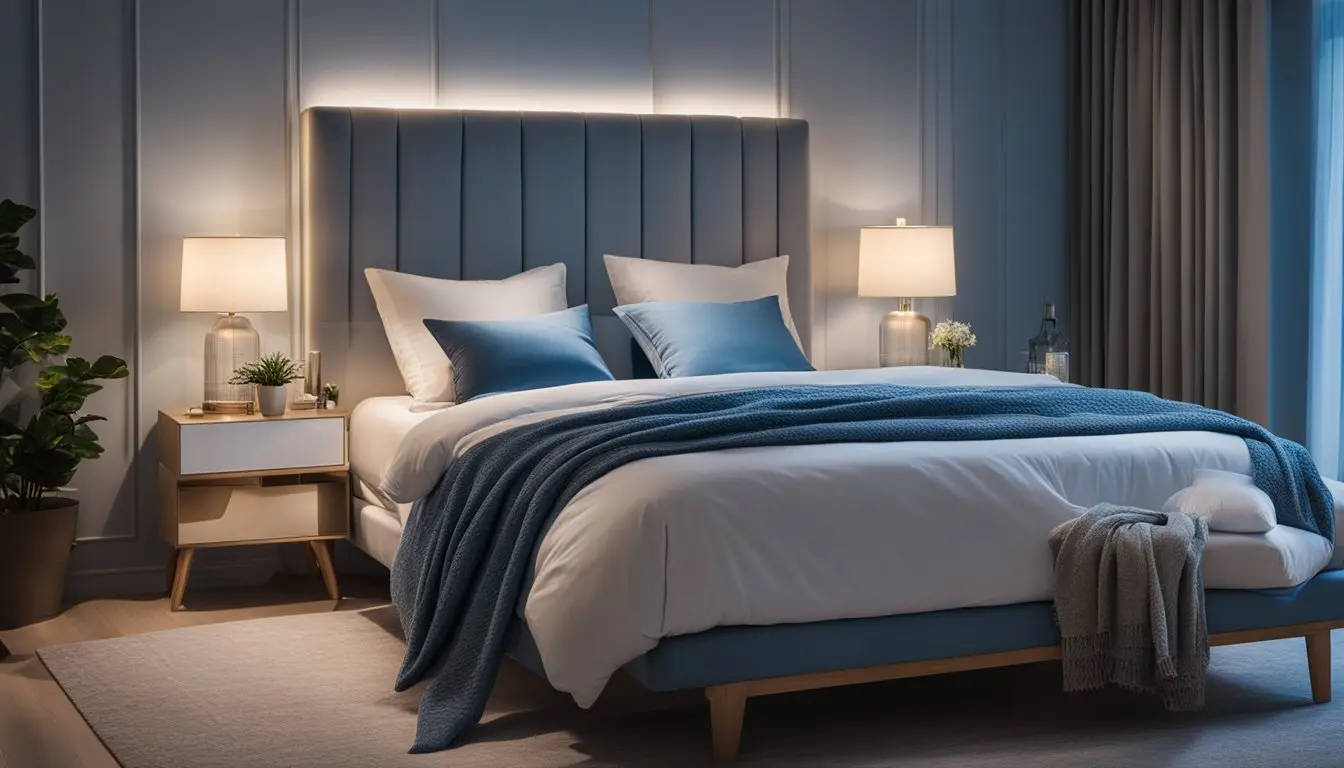
Warm colors like red, amber, or warm white LEDs in the 2000K-3000K range are considered most beneficial for sleep. These colors promote the production of the sleep hormone melatonin and create a soothing atmosphere. On the other hand, cool white, daylight, and blue LED light colors in the 4000K-6500K range can disrupt the circadian rhythm, leading to poor sleep quality.
Yes, red LED lights can improve sleep quality. It stimulates the production of melatonin, a hormone that helps you mentally and physically relax, facilitating a better night’s sleep. Red light has also been shown to enhance endurance and physical activities for athletes the following day.
While there is limited research on green LED lighting specifically for sleep, it is generally considered less disruptive than blue light. However, it is essential to remember that warm colors like red, amber, and warm white are still preferred for sleep as they promote melatonin production.
Amber LED lights can indeed aid in better sleep hygiene. Amber is a warm color and can positively impact sleep by promoting the production of the sleep hormone melatonin. Using amber LED lights in your sleep environment encourages a more restful and comfortable atmosphere ideal for good sleep hygiene.
There is limited research on pink LED lighting and its effects on sleep. However, pink is a warm color, and like red and amber, should be less disruptive to sleep than blue light. As such, pink LED lighting may have a neutral or slightly positive impact on rest, although more research is needed to confirm its specific benefits.
There isn’t much research on the impact of purple LED light on sleep. Purple is a cooler color, and more fantastic colors are less optimal for sleep than warmer colors like red, amber, and warm white. While it might not be as disruptive as blue light, opting for warmer LED light colors is still recommended to maximize sleep quality and maintain a healthy circadian rhythm.